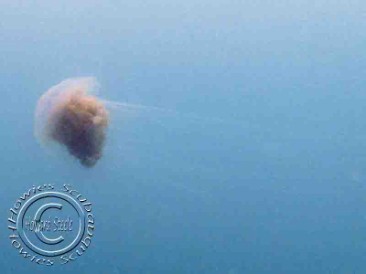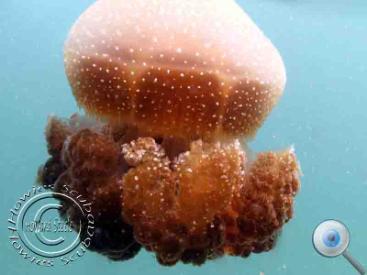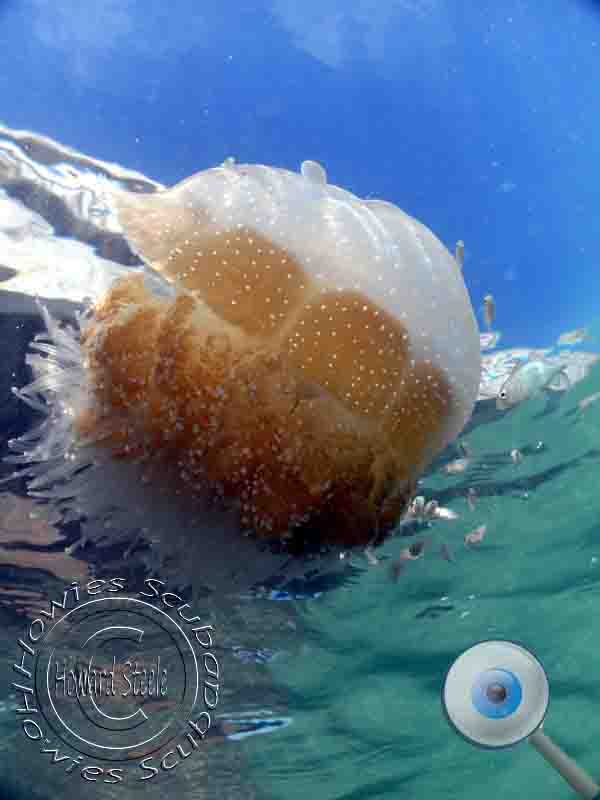Marine Life Identification Perth WA
Shore Diving
Jellyfish
Jellyfish (also known as jellies or sea jellies or Medusozoa) are free-swimming members of the phylum Cnidaria. Jellyfish have several different morphologies that represent several different cnidarian classes including the Scyphozoa (over 200 species), Staurozoa (about 50 species), Cubozoa (about 20 species), and Hydrozoa (about 1000–1500 species that make jellyfish and many more that do not). Medusa is another word for jellyfish, and refers to any free-swimming jellyfish stages in the phylum Cnidaria... (Wikipedia)
---------------------------------------------------------------------------------------------------------------------------------------------------------------------------
Moon Jellyfish
(Aurelia coerulea)
These photogrpahs of Moon Jellyfish where taken at Rockingham DT. I have to say I have not seen a great deal of Moon Jellies and the Sea Nettle and Cardinals Hats seem a lot more prominent at the local dive sites in Perth.
Bottom four in this series taken at Blackwall Reach in the Swan River.
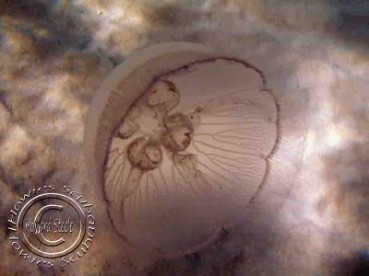
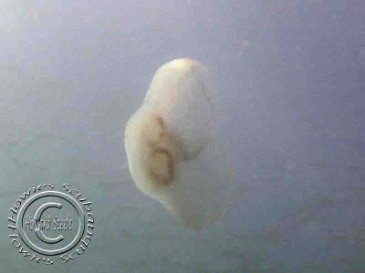
Sea Nettle
(Chrysaora sp)
The Sea Nettle is everywhere and I have been stung, right across the lips. The Jellyfish itself is quite small maybe 15 - 25 cms across but its tentacles can be as long as a 1 meter in length.
None of the stings have been serious but certainly irritable requiring application of some anti-stinging agent. A hood will give you extra protection if you swim into one of these. I always thought that maybe putting some petroleum jelly on your lips my give some added protection.... not that I have remembered to try it....
Tip: when the weather gets really really hot.... around mid 30's - 40 degrees then these little pains in the backside come out in the numbers.
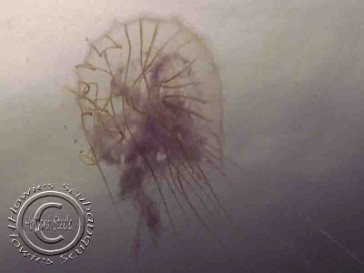
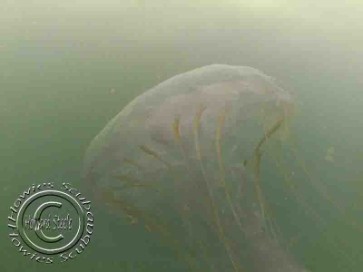
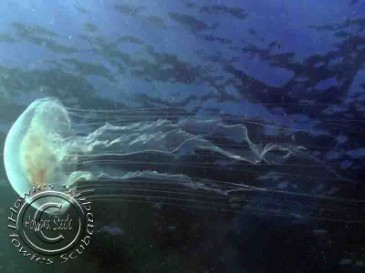
White Spotted Jellyfish
(Phyllorhiza punctata)
The White Spotted Jellyfish looks quite grubby when seen from the surface but actually they are quite beautiful when you see the sunlight shining through them, I think they are quite stunning.
I have some nice video of one of these swimming at Robbs Jetty sea grass area, quite graceful.
If you look closely you will sometimes see small fish foraging within the tentacles as seen in the photographs below.
I am unsure if they are cleaning the jellyfish like so many other fish do that have a symbiotic relationship, this could make for a perfect defensive partner.
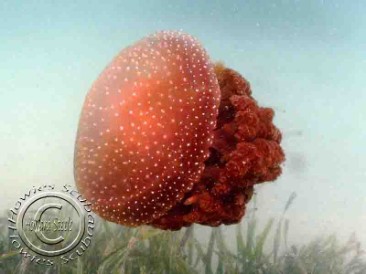
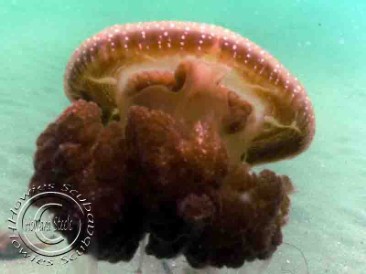
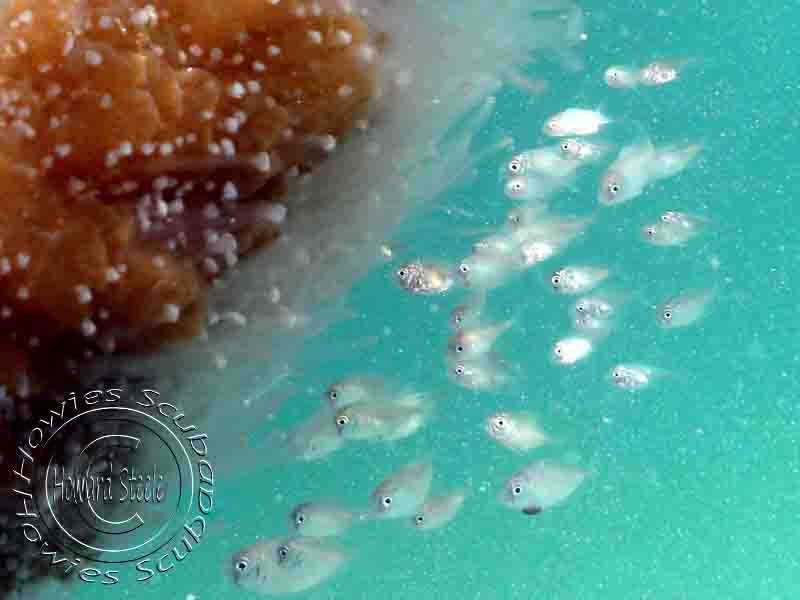
(Pseudorhiza haeckeli)
In five years of diving in Perth I had never seen these jellies, then in one week I got to see two.
From a distance they look very similar to the White Spotted jelly (above).
Apparently these come from warmer northern waters. Supposedly also have a mean sting
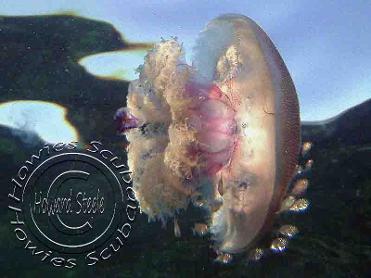
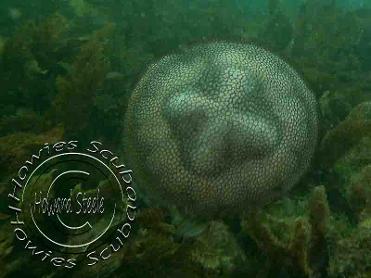
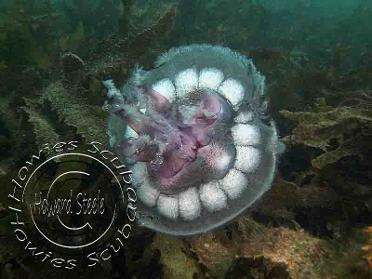
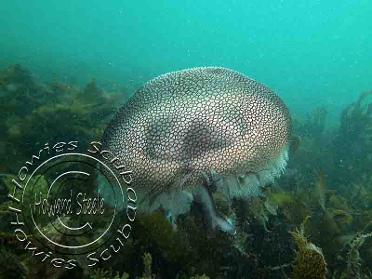
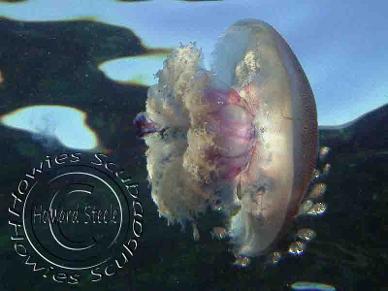
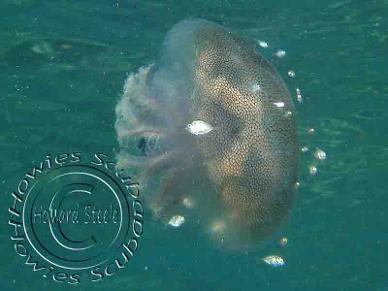
(Physalia physalis)
These Blue Bottle washed up on the shore where photographed at Point Peron and on the second dive I noticed an isolotory Blue Bottle floating past.
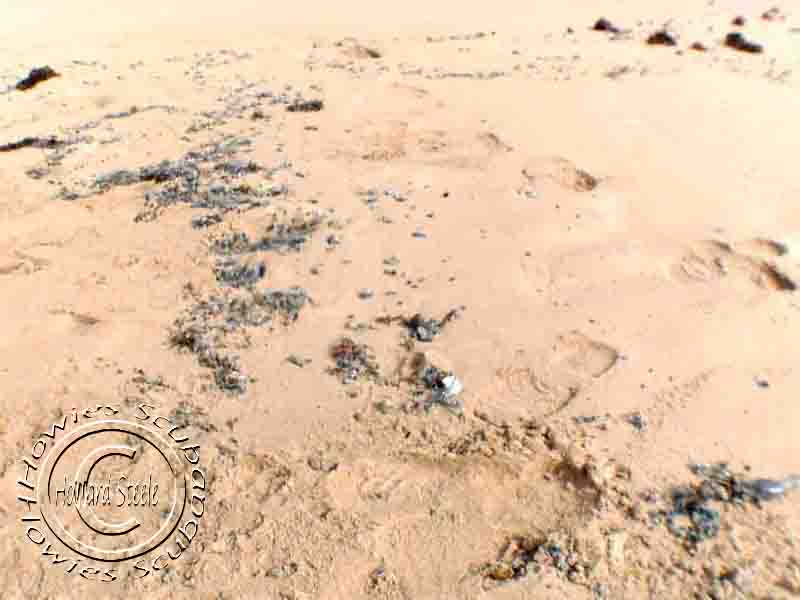
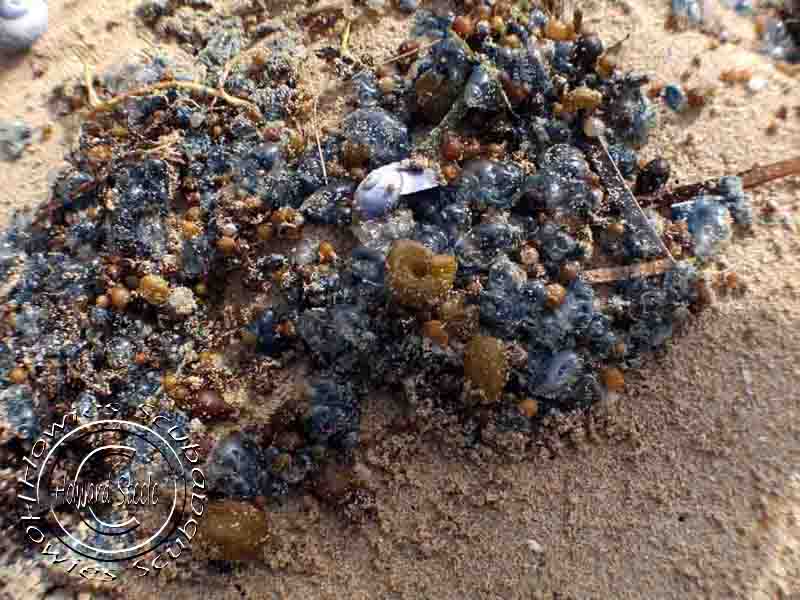
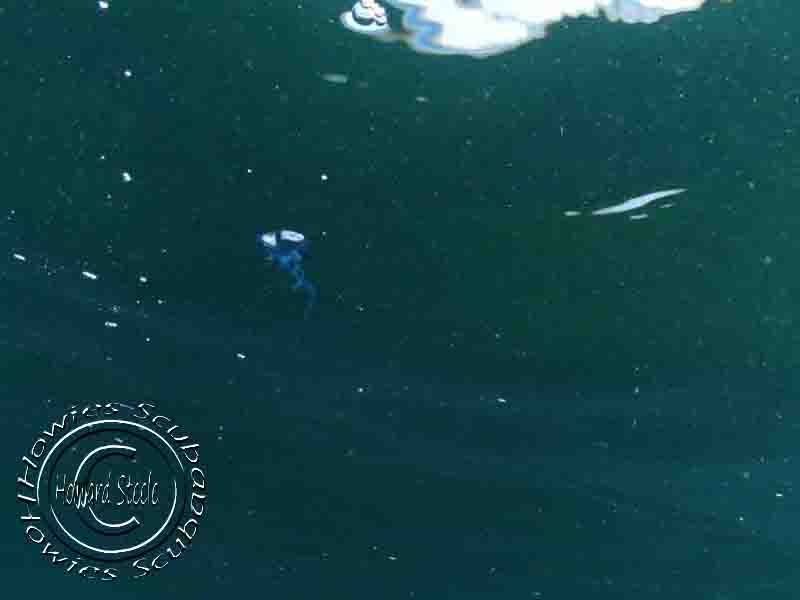
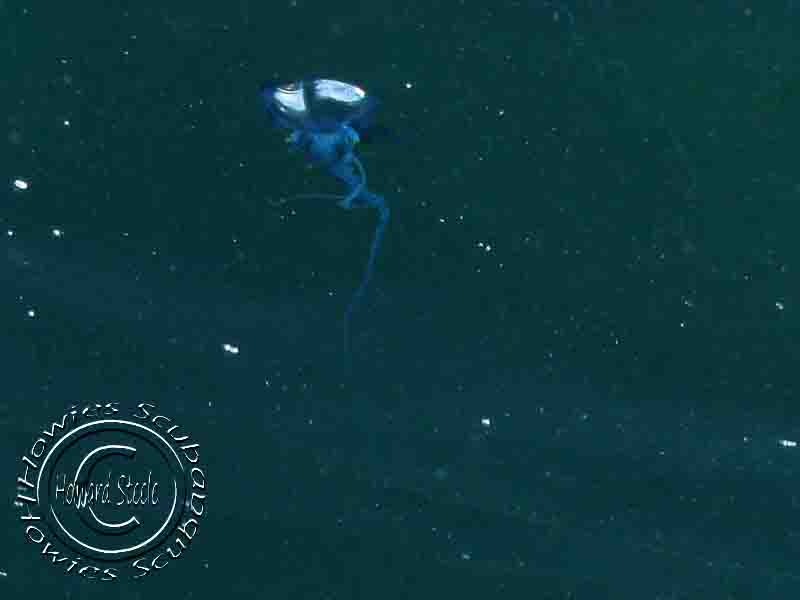
Comb Jellyfish (Ctenophora)
The Ctenophora, from the Greek ctena (comb), phero (carry); commonly known as comb jellies are a phylum of animals that live in marine waters worldwide. Their most distinctive feature is the "combs", groups of cilia that they use for swimming, and they are the largest animals that swim by means of cilia — adults of various species range from a few millimeters to 1.5 meters in size... (Wikipedia)
Cardinals Hat
(Beroe cucumis)
Cardinals Hat are Comb Jellyfish these are another abundant jelly at the dive sites, trying to see them is difficult enough, trying to photograph one is near impossible. They have a beautiful bio-illuminesence cillia that gives off little ripples of lights. These do not have stinging cells and are not classed in same group as jellyfish. They are covered here because who would know that?
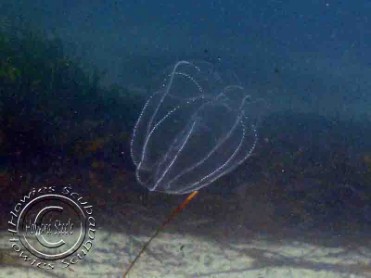
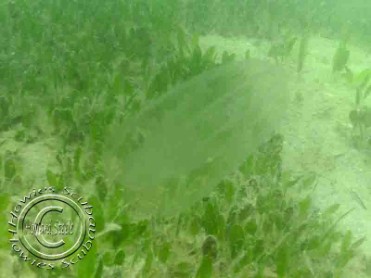
Beroe Forskalii
These Jellies are quite stunning and graceful when you see them gliding past. These two were small, approx. 100 mm in length, however a fully matured Forskalii is about 300 mm in length.
I have seen loads of these however trying to obtain a decent photograph is near impossible.
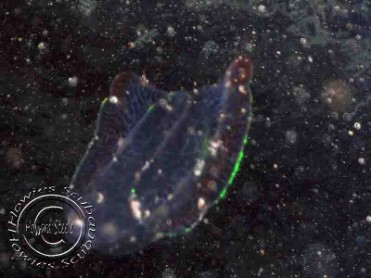
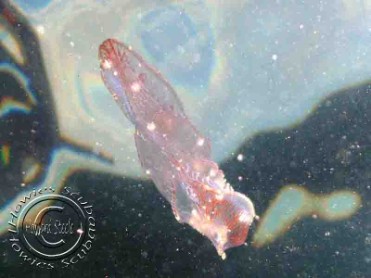
IF YOU'RE NOT GOING DOWN: THEN WHERE THE HELL ARE YOU GOING
